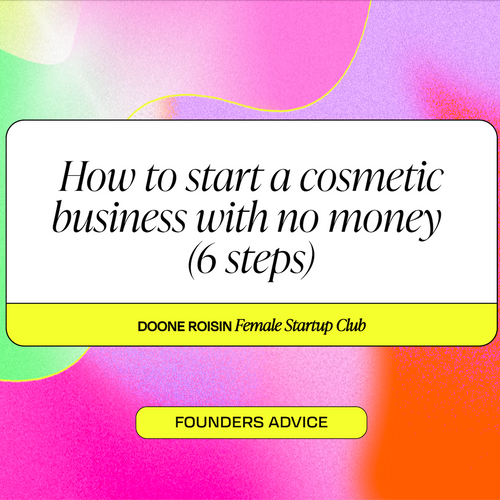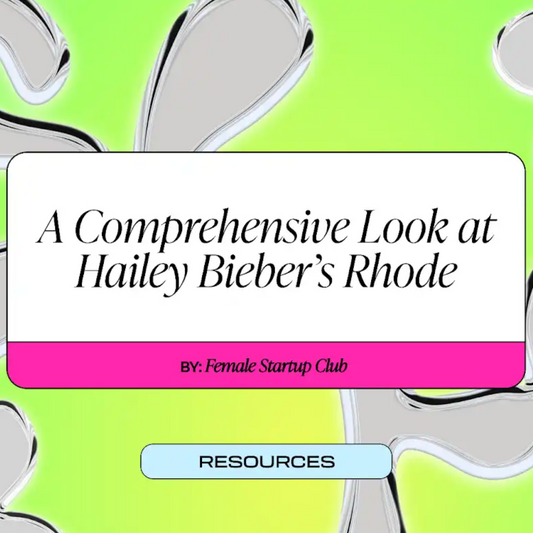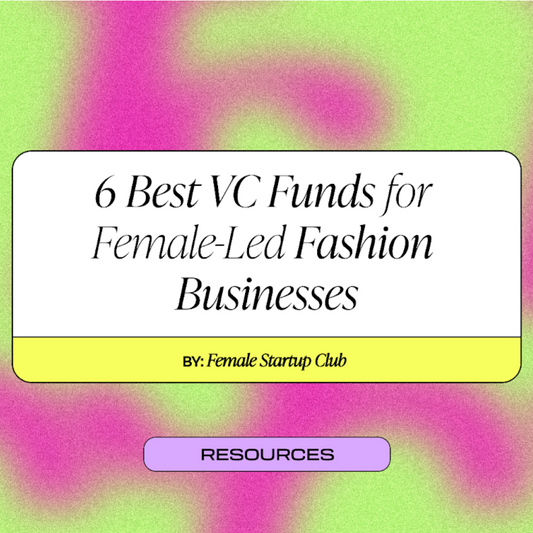Today on the show we’re learning from Katie Spies, founder of Maev.
Founded in 2020, Maev started as a collective of dog parents who wanted better for their dogs. After Katie’s adopted dog George experienced a health scare, she turned her focus to nutrition to keep him healthy and happy. With help from her pet parent community, she began conducting deep research into the modern dog’s biological needs and the shortcomings of products we’ve been told to trust. Fast forward to today Maev has raised $9 million dollars and is on a mission to disrupt the industry.
In this episode, we talk through the origins of the story, when Maev was 1-2 people sitting in a WeWork in Soho, hand-making food, and doing things that no one really understood. Encountering every problem that could happen. To have now raised $9M and nailing the customer satisfaction and finding some great businesses to partner with. One thing that makes the journey with Maev a little more difficult than usual, is the fact the product is shipped as a frozen good. In Katie's words, "I've aged 15 years since shipping frozen food." It’s really logistically difficult. We were lucky enough to be able to learn from her mistakes, and she delved into some tips that make the process a little easier for others looking to get into frozen food. Firstly, you need to make sure your AOV is high enough to cover the costs of shipping. Secondly, you can benefit a lot from finding ways to fit more in the shipping boxes. And finally, finding those innovative partners is absolutely key.
Besides that, we also get into some nifty little tips when it get's to e-mail marketing and some guerilla marketing tactics that have proved successful since the early days of Maev, and helped them build up those initial 100 customers.

Katie’s journey with Maev is a perfect example of how passion and community can drive a startup to success. What started as a small group of dog lovers wanting the best for their pets turned into a fully-fledged business disrupting the traditional dog food market. Here’s a look into how Katie used guerrilla marketing, customer engagement, and a ton of grit to take Maev from a kitchen-made idea to a venture-backed brand.
Starting Out: The Early Days
Katie’s decision to dive into Maev full-time didn’t come lightly. Like many entrepreneurs, she left behind the security of her previous job, but the transition wasn’t easy. In those early days, Katie was a one-woman show, working with a tiny team in a WeWork office in Soho. They were hand-making dog food and dealing with every possible problem you can imagine.
But here’s the thing – even with all those challenges, Katie’s love for her product kept her going. As she puts it, "This is frustrating, but I love the product so much, I’ll put up with everything.” With each problem she solved, it got her one step closer to success.
Guerrilla Marketing and Finding the First Customers
In Maev’s pre-launch days, Katie went old-school to find her first customers. Guerrilla marketing was her secret weapon. She plastered posters all over New York City, used super cool branding, and got people texting in for more info. Word spread like wildfire, especially with other founders talking about Maev, creating buzz in the dog-parent community. Katie leveraged every opportunity, and soon enough, Maev had its first 50 customers.
Scaling Up: From 50 to 1,000 Customers
So, how do you go from 50 customers to 1,000? For Maev, it was a combination of scrappy digital marketing and a relentless focus on customer needs. Katie and her team AB tested everything – from the messaging to the creative on their Facebook and Google ads. They fine-tuned what worked and scaled those channels to grow their customer base fast.
But it wasn’t just about paid media. Email marketing played a huge role in scaling Maev. Katie and her team didn’t just use generic templates. Instead, they crafted personalized messages based on real conversations with customers. That’s right – Katie still takes 5 customer calls a week. She listens to their feedback, learns from their experiences, and uses those insights to continuously improve the customer journey.
Building a Personal Connection with Customers
Katie believes that one of Maev’s greatest strengths is the personal relationship the brand has with its customers. Those 5 weekly calls aren’t just for show. They help Katie and her team understand their customers better than anyone else. “If we can understand the customer better than anyone else, we can build any product,” Katie says.
This personal touch has humanized the brand in a way that feels rare in today’s world. Customers feel like they’re part of the Maev family, and that connection has been key to Maev’s growth.
Key Milestones and Raising $9M
Katie’s journey hasn’t been without its challenges (including aging 15 years from the stress of shipping frozen food!). But there were key milestones that helped Maev leap forward. One of the biggest unlocks for the company was finding the right partners to help scale production to meet customer demand. That, coupled with the organic growth from customers raving about Maev on social media, helped the brand gain serious traction.
And when it came time to raise investment, Katie knew she was ready. Maev raised $9 million across a pre-seed and seed round. But Katie is quick to point out that getting your first check doesn’t mean everything else falls into place. Each investor is different, and you have to know how to speak to what matters most to them – whether that’s your community, your product, or your market.
Lessons Learned
Katie’s biggest takeaway? Focus on your core competency. In her early days, she made the mistake of hiring a brand agency that cost close to $100K, only to end up doing most of the work in-house. "Don’t let people tell you that you need help with something if you really don’t need help with it,” she says.
Katie also emphasizes the importance of knowing your unique value proposition. In a crowded market like pet food, it’s essential to figure out what makes your brand stand out and to play to that strength. For Maev, it’s their commitment to providing dogs with the best nutrition, backed by deep research and a passionate community of pet parents.
Final Thoughts
Katie Spies is a perfect example of how grit, passion, and a deep connection to your customers can drive a startup to success. Maev’s journey from guerrilla marketing to a $9 million raise is proof that when you’re solving a real problem for your audience, and doing it with authenticity, the results can be incredible.
Stay tuned for part two of Katie’s story, where we’ll dive deeper into her tips for building a sticky community and scaling a direct-to-consumer brand. And if you learned something from this post, don’t forget to share it with your friends (and maybe your dog’s friends too)!



